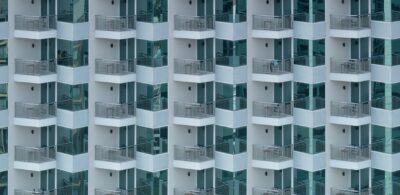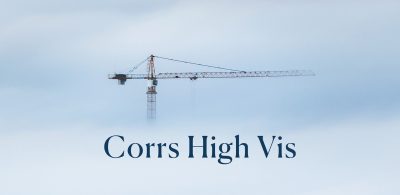Victoria declares absolute ban on high-risk cladding
25 January 2021
From 1 February 2021, the Victorian Government will ban the use of high-risk cladding products in certain types of buildings. The regulatory shift removes the discretionary use of the products through performance-based solutions and appeals to the Building Appeals Board.
Prohibition
On 13 January 2021, the Victorian Government announced its Prohibition of High-Risk Cladding Products Declaration (Declaration), which will come into effect on 1 February 2021.
Pursuant to the Declaration, the following external wall cladding products are prohibited from being used by any person carrying out building work in connection with Type A or Type B buildings in Victoria:
- aluminium composite panels (ACPs) with a core of less than 93% inert mineral filler (inert content) by mass in external cladding as part of a wall system; and
- expanded polystyrene products used in an external insulation and finish (rendered) wall system,
(the Prohibited Products).
The Declaration only applies to Type A and Type B Construction, the categories most susceptible to the fire risks associated with the Prohibited Products. Type A and B Construction includes:
- apartment buildings, hotels and public buildings such as aged care facilities and hospitals with two or more storeys; and
- office buildings, shopping centres, warehouses, parking lots and factories with three or more storeys.
How is the Declaration different from the current Ministerial Guideline?
The current Ministerial Guideline 14: Issue of Building Permits Where Building Work Involves the Use of Certain Cladding Products (MG-14) will be revoked on 1 February 2021. Under MG-14, building surveyors should reject building permits for buildings of Type A or B Construction unless:
- they are satisfied that the products used in the external wall system are not combustible as defined in MG-14; or
- the use of the high-risk combustible products in a performance solution has received a determination from the Building Appeals Board.
The Declaration, however, goes beyond applying only to building surveyors and imposes an absolute ban on the use of Prohibited Products in Type A and B Construction and removes the discretionary use of the Prohibited Products through performance-based solutions.
The Declaration also imposes stricter requirements in respect of ACP products, allowing only 7% combustible content by mass (including but not limited to polyethylene), over and above the previous threshold of 30% polyethylene in MG-14 (which failed to capture other potentially combustible materials).
Will the Declaration affect existing buildings?
The Declaration will not affect existing buildings or permits applied for before 1 February 2021. However, the position in respect of buildings that are in the process of obtaining approval from the Buildings Appeal Board (for compliance with MG-14) prior to obtaining a permit is unclear.
The Victorian Government’s justification for this is that the Prohibited Products are not inherently unsafe. They can be safe where they have been appropriately installed in conformance with a performance solution that has been designed by a qualified professional and reviewed by the Building Appeals Board.
The purpose of the Declaration is to reduce the risk of future inappropriate use of the Prohibited Products by banning their use altogether in Type A and B Construction. In particular, the Minister for Planning has stated that certain performance-based solutions have been difficult to validate and that the scheme had been misused in the past.
Future Action
Moving forward care should be taken by consulting professionals to ensure compliance in specifications and additional validation measures could be introduced into contracts to mitigate against the risk of non-compliance and the need for remedial works.
Authors
Tags
This publication is introductory in nature. Its content is current at the date of publication. It does not constitute legal advice and should not be relied upon as such. You should always obtain legal advice based on your specific circumstances before taking any action relating to matters covered by this publication. Some information may have been obtained from external sources, and we cannot guarantee the accuracy or currency of any such information.



